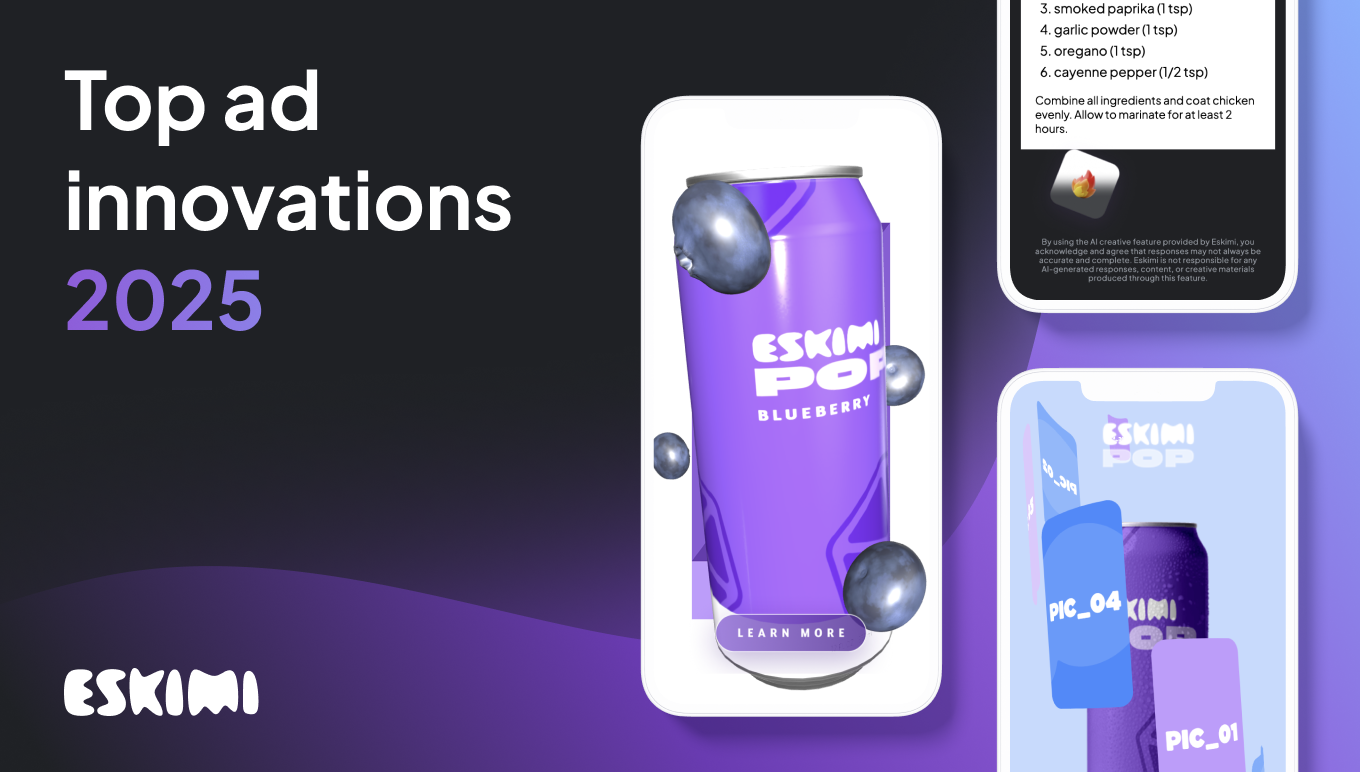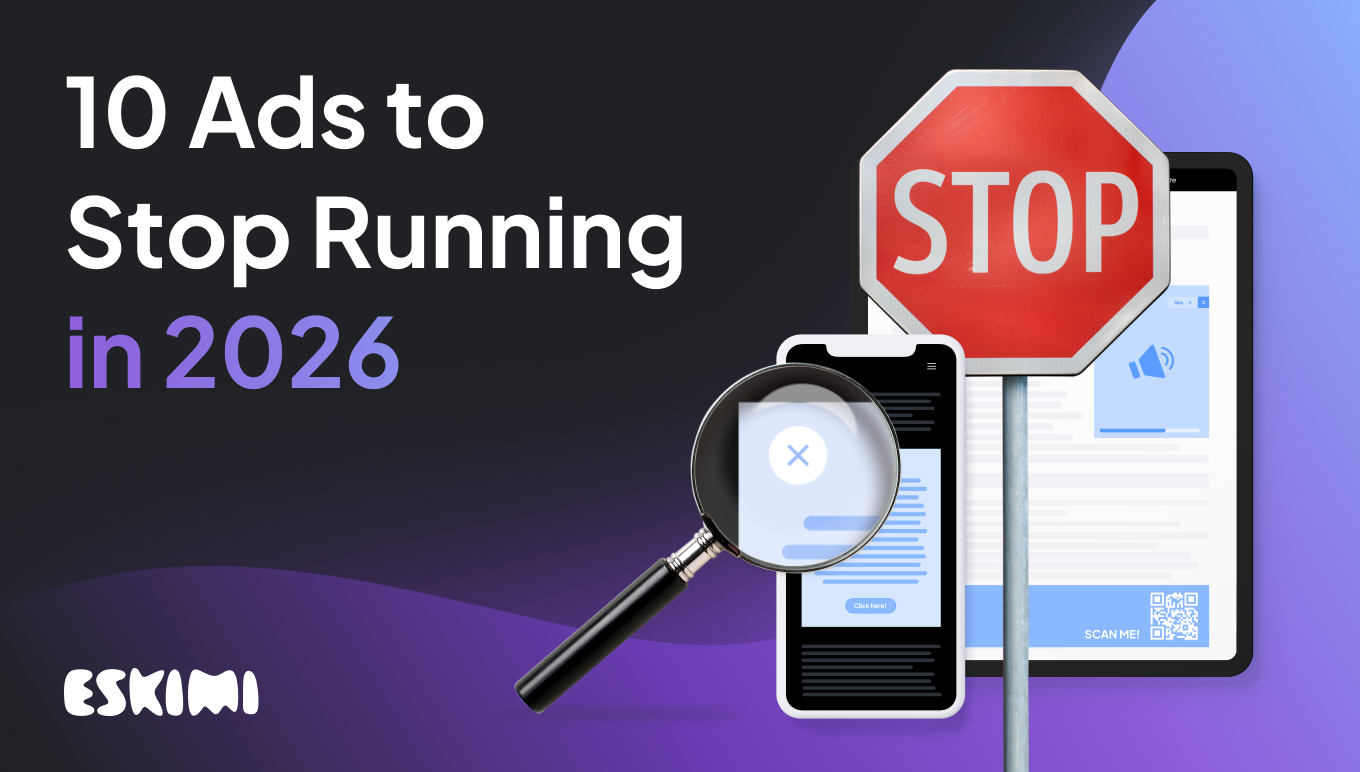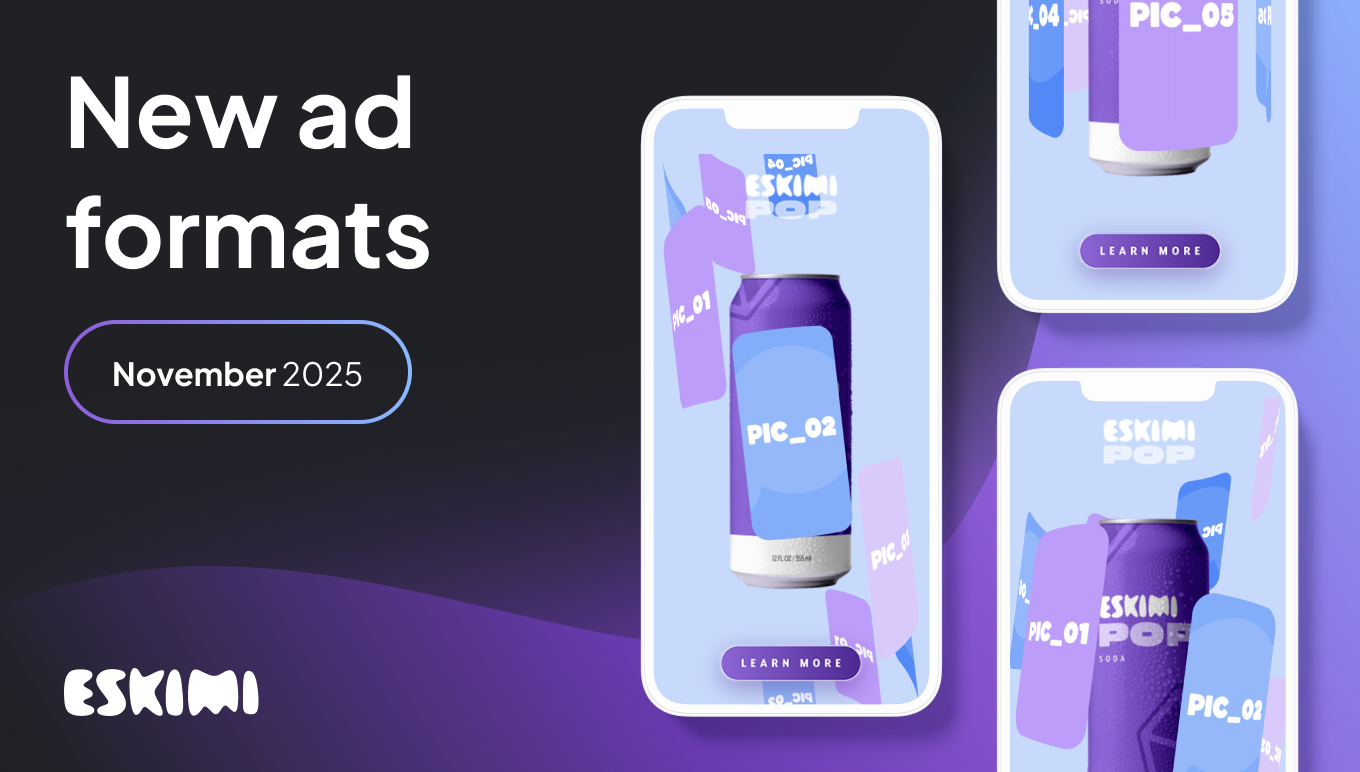In-Game Advertising Stats & Trends [2024]
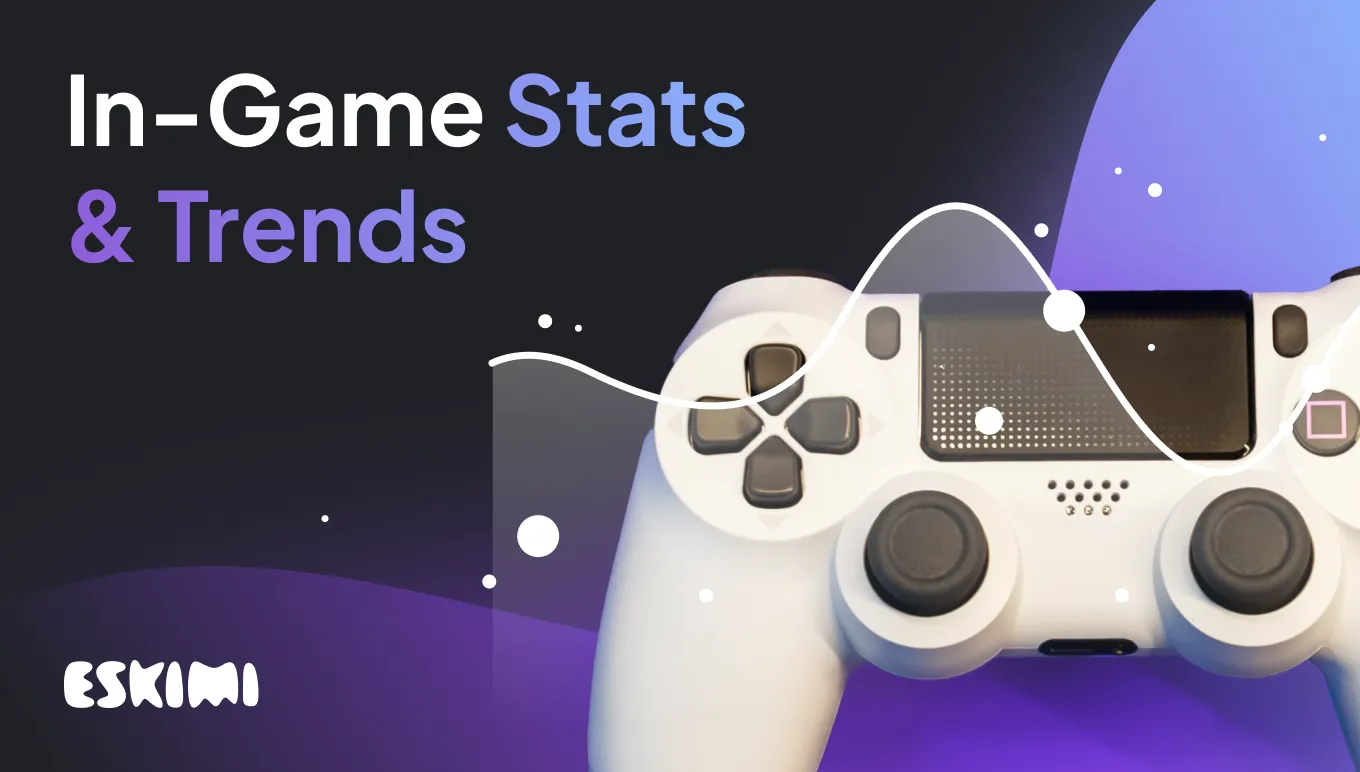
These last few years, the gaming industry has seen unprecedented growth in popularity and, of course, revenue.
This opened up new doors not only for gamers and developers but also for in-game advertisers, always on a mission to find the best spots to promote a product.
So, how did it all go, and what’s next for the gaming industry and in-game advertising? We’ve compiled a bunch of facts, stats, and trends to answer it all:
- What is in-game advertising?
- Benefits of in-game advertising
- Gaming industry & behavior overview
- In-game advertising overview
Let’s get down to it!
What is in-game advertising?
In-game advertising (IGA) is pretty self-explanatory – it's a form of marketing inside a video game. The advert can take various forms, from banner and video ads to product placement.
The first examples of in-game advertising date back to the early 1990s – remember those giant billboards in DOOM? – but it's only in the past decade when this form of marketing really started to take off.
With the development of technology, better internet connection speeds, and more immersive gameplay, advertisers saw a unique opportunity to place their products right in front of potential customers while they’re relaxed and their guard is down.
Blended in-game advertising
Blended in-game ads are naturally “blended” onto the in-game objects or into the background of the gaming environment in a non-intrusive yet highly viewable way.

They’re not built-in but instead implemented in real time and shown to the highest bidder. Blended in-game ads can take both static (image) and dynamic (video) rich media forms.
An older, but great in-game advertising example is Obama’s election campaign in 2012, where his image was shown.

Benefits of in-game advertising
ExchangeWire points out brand safety, engagement, involvement, measurement and ROI, reach, data, and viewability as the primary advantages in-game advertising offers for advertisers.
- Brand safety. Video games don’t contain user-generated content. With a cautious genre choice, there’s no way for the ad to appear in an unsuitable environment.
- Engagement. A study done by TapJoy reveals that 72% of mobile gamers willingly engage with rewarded in-app ads, while 64% prefer rewarded ads over sponsored social media posts. The value gamers get from in-game rewards creates a feeling of their money going further.
- Involvement. In-game ads connect with users when they’re in a state of relaxation. And there’s no better state to catch attention!
- Measurement. It's easy to track metrics such as reach, and completion rate
On top, in-game ads offer brands a way to create highly focused, targeted promotional campaigns which cost less upfront and generate higher ROI.
- Reach. In-game advertising can also reach a much wider audience than traditional forms of marketing. More people are now playing video games than ever before – you’ll see the numbers talking for themselves in the next section.
- Data. The gaming industry, especially mobile gaming, produces a good amount of data, allowing marketers to accurately target audiences based on their age, gender, geography, device, and interests. It also features real-time analytics for better optimization and performance.
- Viewability. Finally, in-game ads are impossible to “skip”. Ad-tech companies like Eskimi continuously develop innovative solutions and partnerships to track viewability even in rapid-paced game environments.
Gaming industry & behavior overview
Now, let’s see what’s there in the gaming industry that raises in-game advertising potential that much.
Global gaming market to reach 286.8 billion in 2025
Over the past decade, the value of the global video game industry has been booming.
- Statista anticipates the continued rise to follow, hitting the 200 billion USD threshold in 2023.
- It’s also predicted the worldwide gaming market to reach 268.8 billion USD annually in 2025, growing from 178 billion USD in 2021.
- Despite rapid expansion in Asia, North America's expected to be the world's most-earning gaming market in terms of revenue.
- In 2025, Statista projects in-game purchases to account for more than 74 million USD globally.
- It's forecasted that this market segment will grow at a yearly rate of 10.69% through 2023-2028, reaching a total value of €144.30 billion by 2028.
- The projected average revenue per user (ARPU) stands at €23.11.
- So far, mobile games account for the most significant portion of this market's revenue, while console games account for over a third of the total generated amount.

In-game advertising market by type
According to recent market research the in-game advertising ads are categorised into three types: static ads, dynamic ads, and advergaming. Static ads, which remain unchanged, are projected to dominate the market. These ads are ideal for brands aiming to boost awareness and engage with a broad audience. While static ads often take the form of banners or in-game placements, they can sometimes be confused with dynamic ads.
The research included players like Blizzard Entertainment Inc., RapidFire Inc., Alphabet Inc., Anzu Virtual Reality Ltd., WPP Plc., Electronic Arts Inc., ironSource Ltd., Playwire LLC., Motive Interactive Inc., MediaSpike Inc.

The global in-game advertising landscape is segmented by device type into two key categories: PC/laptop and smartphone/tablet. The PC/laptop category is anticipated to lead the market, largely due to the popularity of platforms like Steam, known for its record-breaking global user numbers. The prevalence of online games with advanced graphics on PCs/laptops contributes significantly to this segment's dominance, offering players worldwide a superior gaming experience.

Mobile gaming as a driving force of the market
Mobile gaming has become an impetus behind the quick rise of the global video game market. From 2012 to 2021, the mobile share in the worldwide gaming revenue has grown from 18 to 59%.
According to the study done by Mordor Intelligence, the increasing demand for mobile games results from various technological advancements and improvements, such as AR, VR, cloud gaming, and 5G.
On top, accessibility here plays a crucial role, as "nearly everyone has a smartphone with games," Mordor Intelligence says.

In 2022 alone, mobile games are predicted to reach 91.4 billion USD or 45% of the worldwide video gaming industry revenue.
As smartphone usage is speeding up fast across the world, the mobile gaming market is underway to exceed the 100 billion-dollar-stamp by 2023.
It’s no wonder this revolutionary growth is also turning one of the biggest video game markets in the world – the United States. As a result of developing technologies, virtual innovations, and the COVID-19 pandemic lockdowns, the number of US mobile game users is now the highest compared to earlier before.
While the whole video gaming industry in the United States is anticipated to grow to 72.6 billion USD by 2027, the mobile gaming segment should reach 59.3 billion dollars, remaining the dominant part of the market.
Expanding gaming landscape in Asia-Pacific
The Asia-Pacific (APAC) region has always been a crucial part of the gaming market.
- Statista predicts the APAC will amount to more than 197 billion USD in 2022.
- Moreover, the APAC should remain the home for over half of the world's gamers by 2024 (3.3 billion in total). Along with its immense user base from all age groups, a region is an established place for long-standing industry players, innovations, and trends.

- The number of smartphone users (in particular, internet users) in the APAC has significantly increased in the last few years, and it's projected to hit 3,339.07 million by 2025. The expanding accessibility, as a result, can substantially alter the region's gaming landscape.
Video games over books
Video games have become a mainstream form of entertainment, accounting for most digital media revenues around the globe.
A recent estimate shows the video game industry is already bigger than some major industries, including book publishing, newspapers, and magazines.
The COVID-19 pandemic has done wonders for the gaming industry as people turned away from traditional forms of entertainment and socialization. As such, it's no surprise that the most valuable game companies are sprawling global entities with billions of dollars worth!
Sony, Microsoft, Apple – critical players in the market
The video game industry is a highly competitive and complex market, with Sony Corporation leading the way as one of its key players.
With the increased demand for online games across all regions in recent years, this growth can be attributed to intense rivalry among competitors like Microsoft or Nintendo, who release next-generation consoles every other year, fueling the competition.
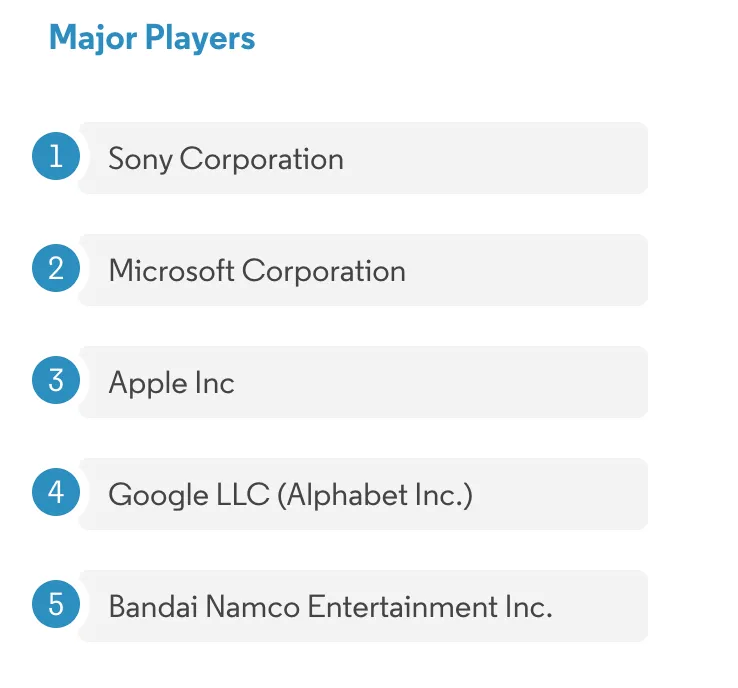
It's not all fun and games, after all
Video games are no strangers to economic pressures. The industry's tremendous growth over the past years has created an expanding user base that is now more susceptible to economic forces than ever.
Why is it so? When the industry is focused on core fans, they usually find the money for their hobby even in hard times.
As a result, a forecast from Ampere Analysis predicts the global games content and services market will see a decline of 1.2% this year to $188 billion.
"As we progress through a period of heavy inflation, with an increasing cost-of-living squeeze, and a higher potential for a recession, it is inevitable that the games market will be negatively impacted in certain areas," wrote Ampere.
Fortune argues that beyond inflation, the return to a more normal lifestyle is impacting gaming somewhat. As people already have a chance to get back to their normal lives, some are playing less – both on consoles, PCs, and mobile devices.
Global inflation reduces spending on video games
NPD looked deeper into the reasoning for the decreased video game spending in 2022. Here’s what they got:
1. Global inflation and changes in spending
The growing food and gas prices, energy costs, and general financial instability can possibly make video game spending much less of a priority.
Live events and traveling costs are also recovering from the COVID-19 pandemic, which means there is less spare money to spend on hobbies like gaming.
2. Supply issue
Sky News post recently reported that the PlayStation 5 has been experiencing supply issues due to chip storage, which also affects graphic cards and processors. As a result, few people could buy or upgrade their PCs.
Because of these supply issues, the video games industry is experiencing a sales decline as people cannot buy as many new consoles as they like. Most gamers prefer waiting until they get the latest consoles before playing the more recent games.
So, even if there's a demand for video game spending, people will likely have to wait until these issues calm down.
3. Rise of subscription services
NPD also reported the subscription content remains the only part of the game sales to increase during Q2 2022. This results in cloud gaming becoming mainstream and shifting this gaming model towards streaming services instead of purchasing games.
4. Increasing popularity of free-to-play service games
If you've been gaming lately, you're likely to have played a free-to-play live service game. From Fortnite and Call of Duty, Warzone to Grand Theft Auto Online, these games stand firm in today's landscape as one of the most popular forms around!
In-game advertising market overview
Now that we’ve looked through the ins and outs of the gaming industry, let’s talk about in-game advertising statistics and trends.
In-game advertising to increase
When advertisers radically revised their advertising methods and cut back on all forms of media during the COVID-19 epidemic, one kind of advertising profited greatly: video game advertising.
Advertisers recognized a fantastic opportunity and seized it as video game engagement and consumption increased tremendously during the shutdown. According to current predictions, in-game advertising will continue to rise far into the 2020s.
As a result, the worldwide in-game advertising market is anticipated to produce 13,989.6 USD million in revenue by 2028, rising quickly at a CAGR of 11.2% over the forecast period of 2021–2028, according to Research Dive.

The Asia-Pacific games industry is particularly vibrant:
- Research Dive forecasts that the in-game advertising market will increase at a CAGR of 12.9%, bringing in more than 3.6 billion USD in revenue.
- The analysis predicts that the North American in-game advertising industry will be greater, reaching more than 4.7 billion USD by 2028, making APAC the most lucrative worldwide area for in-game advertising, although not the largest.
- According to the estimate, APAC will account for 34% of market growth between 2021 and 2025.
- The two biggest markets in APAC for in-game advertising are China and Japan, and this region's market will expand more quickly than in other areas.

Research Dive also predicts that the adoption of smartphones and the rising popularity of mobile gaming will be a driving force in the growth of in-game advertising by 2028. The smartphone/tablet sub-segment will display the fastest growth, surpassing 6 billion USD by 2028 with a CAGR of 12.2%.
NLP to boost in-game advertising
Another element boosting the increase of the in-game advertising market share is the integration of NLP. Technavio claims that by determining whether a gamer is accessible to connect with the advertisement before presenting it, NLP inserts smart advertisement formats straight into the game loops.
By fostering a favorable relationship with the player, NLP utilized for in-game advertising may assist the advertiser in developing a compelling brand message.
93% of media buyers intend to run in-game advertising by 2025
A recent Admix survey reveals the following:
- 81% of media buyers would maintain or raise in-game advertising spending over the next 12 months. By 2025, 83% want to adopt the format entirely.
- While in the US just 33% of media buyer clients demand in-game activity, 52% of UK clients are interested in this option.
- A staggering 93% of media buyers want to run in-game advertising by 2025, according to Admix, a platform for integrating advertisements and product placement into gaming.
- Findings show that awareness of the potential is excellent, even though knowledge of how to realize it is still lacking.
In-game ad revenues are growing
According to eMarketer, in-game ad sales on mobile alone will hit $11.54 billion by the end of 2024.
Advertisers tend to underestimate scaling audiences
There is still a dissonance between perceptions and reality when it comes to how advertisers approach the games industry, according to an October 2021 analysis from Admix. Even though there’s a widely reported rise in gaming activity caused by the COVID-19 pandemic.
In a survey of more than 400 media buyers in the US and the UK, Atomik Research discovered that:
- 30% of participants thought there were between 100 and 500 million daily active gamers.
- In contrast, 27% said there were between 500 million and one billion.
- Actually, there are three billion people, of which 2.8 billion use mobile devices to play games.
So, it’s somewhat predictable that media purchasers underestimate the number of gamers worldwide.
"Perceptions persist that only certain types of video games on certain types of platforms "count" as video gaming," notes the report author, citing a statistic from Savanta that only 11% of people who play particularly on smartphones or tablets consider themselves gamers, compared with almost half of those who play on consoles or PCs.
Nonetheless – as we've seen – the strength of the mobile gaming industry is genuine; however, according to a survey, 60% of marketers stated console games supplied more "premium" video game inventory than mobile devices.
As a result, the perception gap might negatively impact advertisers if they lose the chance to target mobile gamers. At the same time, it may be an image problem that providers of mobile gaming inventory need to address.
Interested in getting started with in-game advertising?
Feel free to book a demo of Eskimi or learn more about our solutions here.
Level Up Your Advertising with Eskimi
- Reach 96% of Open Web
- 2,500+ Targeting Options
- 100% Managed or Self-Service
- In-House Creative Studio Team
- Display, Video, In-Game & CTV
- #1 Rated DSP on G2


